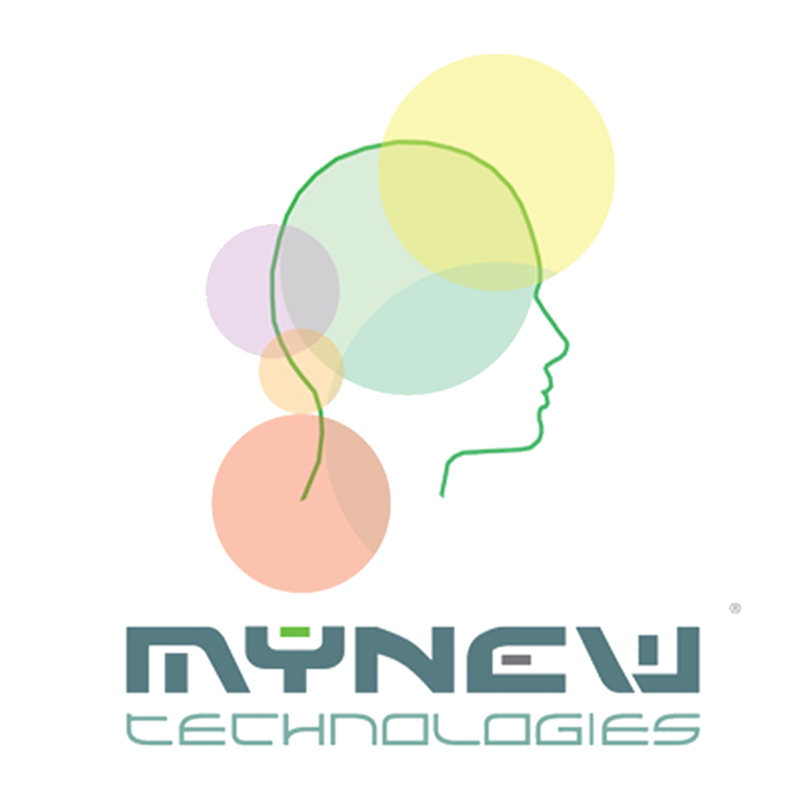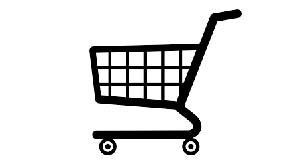Internet of Things (IoT) Consulting
The Internet of things has evolved due to the convergence of multiple technologies, real-time analytics, machine learning, commodity sensors, and embedded systems.
Traditional fields of embedded systems, wireless sensor networks, control systems, automation (including home and building automation), and others all contribute to enabling the Internet of things. In the consumer market, IoT technology is most synonymous with products pertaining to the concept of the "smart home", including devices and appliances (such as lighting fixtures, thermostats, home security systems and cameras, and other home appliances) that support one or more common ecosystems, and can be controlled via devices associated with that ecosystem, such as smartphones and smart speakers. IoT can also be applied to healthcare systems, also known as H-IoT
Traditional fields of embedded systems, wireless sensor networks, control systems, automation (including home and building automation), and others all contribute to enabling the Internet of things. In the consumer market, IoT technology is most synonymous with products pertaining to the concept of the "smart home", including devices and appliances (such as lighting fixtures, thermostats, home security systems and cameras, and other home appliances) that support one or more common ecosystems, and can be controlled via devices associated with that ecosystem, such as smartphones and smart speakers. IoT can also be applied to healthcare systems, also known as H-IoT
Internet of Things (IoT) Explained
Imagine you're at work in realize that you might not have turned off the air conditioner while leaving your house instead of traveling all the way back home. What if you could use your smartphone to know the status of your AC and perhaps even turn it off, wouldn't that be amazing? Well, yes. And this can be achieved with the help of the internet of things until recently access to the internet was limited via devices, like the desktop tablet, or smartphone. But now with iot He practically all appliances can be connected to the internet and monitored. Remotely iot is shaping the way we live our lives. It helps us get a better insight into the working of things around us.
So what exactly is the Internet of Things iot? Is a system of interrelated devices connected to the internet to transfer and receive data from one to the other. A smart home is the best example of iot Home. Appliances, like the AC doorbell, thermostats, smoke detectors, water, Peters and Security Alarms can be interconnected to share data with user over a mobile application, the user can now get detailed insight into the working of the devices around him, think about it until recently, the internet. Help people, connect and interact with each other but now inanimate objects or things have the ability to sense the surroundings to interact and collaborate with one another, for example, in the morning when your alarm goes off, the iot system can open the window, blinds I turn on the coffee pot for you and even turn on the water heater.
Although all of this is fascinating, there's a lot that goes on, in the background to ensure seamless functioning from effective communication between devices to Accurate processing of the data received, a lot of components are involved in the context of iot devices. Hardware can be classified into General devices and sensing devices. The general devices are the main components of the data Hub and information. Exchange, they are Acted either by wired or Wireless interfaces. Home, appliances are a classic example of such devices.
The sensing devices, on the other hand, include sensors and actuators, they measure the temperature, humidity light, intensity and other parameters. These iot devices are connected to the network with the help of gateways. These gateways or processing nodes process. The information collected from the sensors and transfer it to the cloud the cloud acts as both the storage. And processing unit, actions are performed on the collected data for further learning and inferences wired and wireless interfaces like Wi-Fi, Bluetooth zigbee, G SMS. And so on are used to provide connectivity to ensure its ubiquity applications need to support a diverse set of devices and communication.
Protocols from Tiny sensors capable of sensing and Reporting the desired factor to powerful back-end servers that are utilized for data analysis, and knowledge extraction to help you. It's working. Let's take a simple scenario. Let's suppose you want to water your garden. Every time the moisture level in the soil drops, instead of doing it manually. You could automate it using iot, the sensors and actuators installed gauge the soil for its moisture. This information is sent to the iot Gateway with the help of communication, protocols, like mqtt or HTTP, the Gateway significantly Aggregates data and feeds it to the cloud with the help of Wi-Fi Lan once the Moisture level drops, the system is immediately triggered and the sprinklers are turned on. However, with the information stored in the cloud, a detailed analysis like the time of the day, the sprinkler was turned on the rate at which the moisture in the soil reduces and so on can be done and the report could be sent over to you on your smartphone.
Over a nap with the improved response monitoring and analytical capabilities iot is being adopted in almost all Industries in domains opening doors to endless applications today. OT is being used extensively to lessen. The burden on humans today. I'm a few coyotes deployed for Smart Homes, wearables watches and bracelets Smart Cars, Smart farming, smart retail, smart grids, Smart City, and smart Health Care. With such a wide spectrum of applications. The future of IIT looks more promising than ever before.
In 2018. There were about twenty three billion connected devices, which was more than double the world population. According to experts, there will be over 80 billion devices by 2025 iot is a vision to connect all devices with the power of the internet, always learning, and always growing. Now that you have a picture of what iot is. Here's a simple question for you which of the following Technologies is not used as an interface for a network, one Wi-Fi to ethernet three zigbee for VPN. Thought and leave your answers in the comment section below three, lucky winners will receive Amazon gift vouchers. The integration of iot with other Technologies like cloud, computing machine learning and artificial intelligence is Paving the way for many new and exciting Innovations. And that is the internet of things for you.
So what exactly is the Internet of Things iot? Is a system of interrelated devices connected to the internet to transfer and receive data from one to the other. A smart home is the best example of iot Home. Appliances, like the AC doorbell, thermostats, smoke detectors, water, Peters and Security Alarms can be interconnected to share data with user over a mobile application, the user can now get detailed insight into the working of the devices around him, think about it until recently, the internet. Help people, connect and interact with each other but now inanimate objects or things have the ability to sense the surroundings to interact and collaborate with one another, for example, in the morning when your alarm goes off, the iot system can open the window, blinds I turn on the coffee pot for you and even turn on the water heater.
Although all of this is fascinating, there's a lot that goes on, in the background to ensure seamless functioning from effective communication between devices to Accurate processing of the data received, a lot of components are involved in the context of iot devices. Hardware can be classified into General devices and sensing devices. The general devices are the main components of the data Hub and information. Exchange, they are Acted either by wired or Wireless interfaces. Home, appliances are a classic example of such devices.
The sensing devices, on the other hand, include sensors and actuators, they measure the temperature, humidity light, intensity and other parameters. These iot devices are connected to the network with the help of gateways. These gateways or processing nodes process. The information collected from the sensors and transfer it to the cloud the cloud acts as both the storage. And processing unit, actions are performed on the collected data for further learning and inferences wired and wireless interfaces like Wi-Fi, Bluetooth zigbee, G SMS. And so on are used to provide connectivity to ensure its ubiquity applications need to support a diverse set of devices and communication.
Protocols from Tiny sensors capable of sensing and Reporting the desired factor to powerful back-end servers that are utilized for data analysis, and knowledge extraction to help you. It's working. Let's take a simple scenario. Let's suppose you want to water your garden. Every time the moisture level in the soil drops, instead of doing it manually. You could automate it using iot, the sensors and actuators installed gauge the soil for its moisture. This information is sent to the iot Gateway with the help of communication, protocols, like mqtt or HTTP, the Gateway significantly Aggregates data and feeds it to the cloud with the help of Wi-Fi Lan once the Moisture level drops, the system is immediately triggered and the sprinklers are turned on. However, with the information stored in the cloud, a detailed analysis like the time of the day, the sprinkler was turned on the rate at which the moisture in the soil reduces and so on can be done and the report could be sent over to you on your smartphone.
Over a nap with the improved response monitoring and analytical capabilities iot is being adopted in almost all Industries in domains opening doors to endless applications today. OT is being used extensively to lessen. The burden on humans today. I'm a few coyotes deployed for Smart Homes, wearables watches and bracelets Smart Cars, Smart farming, smart retail, smart grids, Smart City, and smart Health Care. With such a wide spectrum of applications. The future of IIT looks more promising than ever before.
In 2018. There were about twenty three billion connected devices, which was more than double the world population. According to experts, there will be over 80 billion devices by 2025 iot is a vision to connect all devices with the power of the internet, always learning, and always growing. Now that you have a picture of what iot is. Here's a simple question for you which of the following Technologies is not used as an interface for a network, one Wi-Fi to ethernet three zigbee for VPN. Thought and leave your answers in the comment section below three, lucky winners will receive Amazon gift vouchers. The integration of iot with other Technologies like cloud, computing machine learning and artificial intelligence is Paving the way for many new and exciting Innovations. And that is the internet of things for you.





